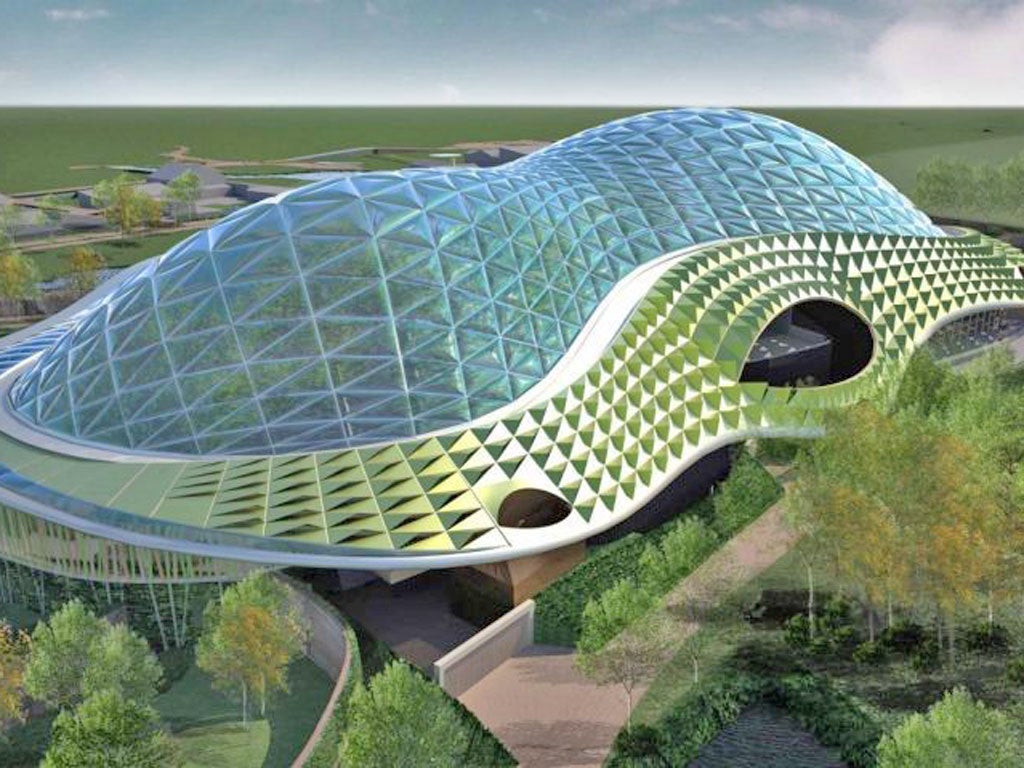Dozens of developments pose threat to sanctity of green belt
Developments to help 'revive the economy' risk destroying countryside, campaigners say

The scale of the threat to the green belt is revealed today with a report highlighting more than 35 proposed developments on protected land.
Local authorities are under growing pressure to rip up countryside-planning rules by approving dozens of building projects including mines, industrial parks and 81,000 homes, according to the Campaign to Protect Rural England (CPRE).
Government policies requiring councils to allocate more than five years' worth of land for new housing is opening up large swaths of England's 1.6 million-hectare green belt to developers, the CPRE warns.
Ministers risk "destroying the countryside" with a construction boom aimed at kick-starting the economy, campaigners say.
About 12 per cent of England is designated as green belt, designed to stop urban sprawl, protect the setting of historic towns, safeguard the countryside from encroachment and promote urban regeneration and the reuse of brownfield land.
The Government has committed to protecting the land. But the CPRE claims that planning inspectors are putting pressure on local council planners to allow building. Proposals that are out for consultation, have been submitted for planning permission or have been approved would cover the same amount of green-belt land as a new town larger than Slough, the charity claims.
Paul Miner, a senior planning officer for the CPRE, said: "The green belt is the most popular planning policy in England and the envy of the world. It helps regenerate our cities and stops them sprawling into rural areas. As a result no one is ever too far from true, green English countryside.
"In times of economic slowdown, politicians can sometimes be tempted by the false promise of an easy construction boom. But destroying the countryside is not the path to lasting economic prosperity.
"Sustainable economic improvement can only come from the sort of urban regeneration that has already done much to rejuvenate many of our largest cities."
The CPRE released a list of the most under-threat areas of the green belt. It included a planned development of 3,000 homes in the Broxtowe district between Nottingham and Derby. According to the Broxtowe Conservative MP Anna Soubry, green-belt land at Awsworth, Kimberly, Watnall and Nuthall will be developed within six years. The plans will also see green-belt land released for development at Brinsley and Stapleford despite thousands of residents signing a petition opposing the move.
Richard Macrae, of the Stapleford and Trowell Rural Action Group, said: "The overwhelming majority of people living here are against the plans. It is a ridiculous idea to build on the green belt. We just can't work out why the councillors are doing it when everybody is against it."
CPRE says UK Coal has submitted a planning application for an open-cast mine within the Broxtowe green belt. Critics described the move as "rape" of the countryside. The mine could extract 1.2 million tonnes of coal over five years. A new hotel has been approved as part of the £225m redevelopment of Chester Zoo in the area's green belt.
The Cheshire West and Chester Council is also expected to begin consultations this month on green-belt land needed for 2,000 homes. According to the CPRE the local authority has sought to promote a number of large park and ride and other developments in the green belt in recent years. Cambridge City Council is holding consultation into plans for 12,350 homes which could see "large-scale" releases of green-belt land within the region, and the CPRE said a further green-belt grab could see an unspecified number of dwellings built in South Cambridgeshire.
Last month, planning inspectors called for Reigate and Banstead Borough Council and Woking Borough Council to bring forward reviews of the local green belt to accommodate up to 2,730 new homes.
New freight terminals near St Albans, Luton and St Helens could also be built on green-belt land. A spokesman for the Department for Communities and Local Government said: "The Coalition Agreement commits the Government to safeguarding green belt and other environmental designations, which they have been in the new National Planning Policy Framework.
"The Government is giving local communities a greater say on planning and is scrapping top-down targets. The Localism Act allows for the abolition of Regional Spatial Strategies which sought to bulldoze the green belt around 30 towns and cities across the country."
Subscribe to Independent Premium to bookmark this article
Want to bookmark your favourite articles and stories to read or reference later? Start your Independent Premium subscription today.

Join our commenting forum
Join thought-provoking conversations, follow other Independent readers and see their replies